The first few versions of my
small spark gap Tesla coil used commercially made
capacitors but I wanted to show how to make homemade ones instead.
I first made some using soda bottles
but they took up a lot of storage space, so I then made some
flat plate capacitors instead.
Both of these are detailed below, along with videos showing step-by-step
how to make them.
This homemade flat plate capacitor is what looks like a small,
horizontal board at the base of the Tesla coil below. It has
4nF of capacitance.
Tesla coil with flat plate capacitor.
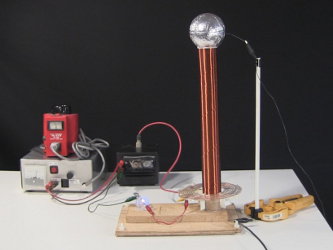 |
|
For the dielectric I had some transparencies which you can get from
photocopying stores, like the UPS Store, basically places that do
photocopying and printing for you. Kitchen aluminum foil served as
the plates. And looking around I found some thin wood that would
act as nice solid pieces to hold everything tightly together as a
sandwich. For bolting it together I had some 1/4" nylon nuts and bolts
from Home Depot.
Transparencies from a photocopying store.
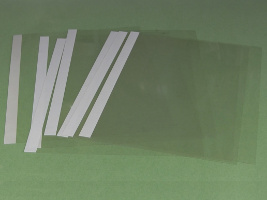 |
|
All of the parts for the capacitor.
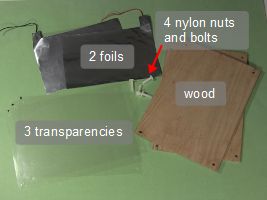 |
|
My small spark gap Tesla coil was designed for a 4nF capacitor and
it turned out that just two plates with a single transparency
between them measured 3.86nF, which was close enough. I could do
tuning on the primary circuit's spiral coil to make up for the
difference.
In the first photo below only the top piece of wood is missing. The
two aluminum foil plates have a single transparency between them.
The positive plate is the bottom one and has the red wire connected
to it, and the negative plate is the top on and has the black wire
connected to it.
Capacitor without the top wood piece.
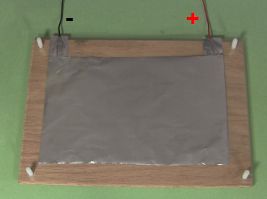 |
|
Measuring the capacitance.
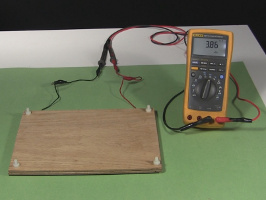 |
|
Below is a video showing step-by-step the construction of this capacitor,
along with some variations and demonstrations of it in use.
I decided to try the large 2 litre/2 quart soda bottles since the large
surface area would give a reasonable capacitance and the plastic has
a high breakdown voltage. Also, once you cut away the top, they have a
fairly open end for reaching your hand into for putting an aluminum
foil electrode.
Tesla coil with soda bottle capacitors.
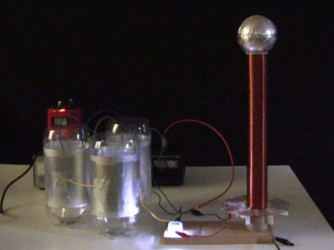 |
|
Each soda bottle capacitor ended up having a capacitance of between
1nF and 1.4nF, depending on how close the aluminum foil was to the
plastic everywhere.
DIY/homemade capacitors for the Tesla coil.
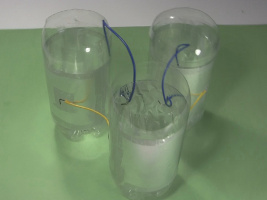 |
|
Capacitors in place beside the spark gap.
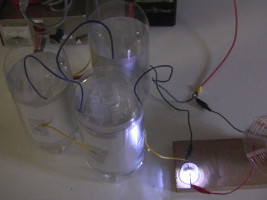 |
|
The following is a video showing step-by-step how I made these
capacitors, along with demonstrations of them in action.









